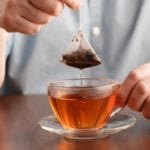 Religion
Religion  Religion
Religion  Weird Stuff
Weird Stuff 10 Horrifying Final Destination-Like Accidents
 Movies and TV
Movies and TV 10 Music Biopics That Actually Got It Right
 History
History 10 Momentous Events That Also Occurred on July 4th
 Animals
Animals 10 Times Desperate Animals Asked People for Help… and Got It
 Movies and TV
Movies and TV 10 Movie Flops That Found Their Way to Cult Classic Status
 History
History 10 Things You Never Knew About Presidential First Ladies
 Movies and TV
Movies and TV 10 Zombie Movies That Will Actually Terrify You
 Humans
Humans 10 Times Scientists Were Absolutely Sure… and Absolutely Wrong
 Our World
Our World 10 Pivotal Moments for Life on Earth
 Religion
Religion 10 Innovations and Discoveries Made by Monks
 Weird Stuff
Weird Stuff 10 Horrifying Final Destination-Like Accidents
 Movies and TV
Movies and TV 10 Music Biopics That Actually Got It Right
Who's Behind Listverse?

Jamie Frater
Head Editor
Jamie founded Listverse due to an insatiable desire to share fascinating, obscure, and bizarre facts. He has been a guest speaker on numerous national radio and television stations and is a five time published author.
More About Us History
History 10 Momentous Events That Also Occurred on July 4th
 Animals
Animals 10 Times Desperate Animals Asked People for Help… and Got It
 Movies and TV
Movies and TV 10 Movie Flops That Found Their Way to Cult Classic Status
 History
History 10 Things You Never Knew About Presidential First Ladies
 Movies and TV
Movies and TV 10 Zombie Movies That Will Actually Terrify You
 Humans
Humans 10 Times Scientists Were Absolutely Sure… and Absolutely Wrong
 Our World
Our World 10 Pivotal Moments for Life on Earth
10 Things We Eat That Are Banned Outside The US
Food is an important aspect of life, it’s what gives us nutrition, energy, and also tastes good. From breakfast to dinner to snacks and even dessert, food can be enjoyed no matter what one’s dietary habits are or the restrictions they face.
However, with almost one-third of Americans eating processed foods, it’s important to know what is going into your food—especially when those ingredients tend to be banned in other countries. From yoga mat ingredients in bread (yes really) to partially hydrogenated oils being banned by the FDA, some ingredients are well hidden and unknown by the average label-reader.
See Also: Top 10 Foods That Are Banned In The US
10 Brominated Vegetable Oil
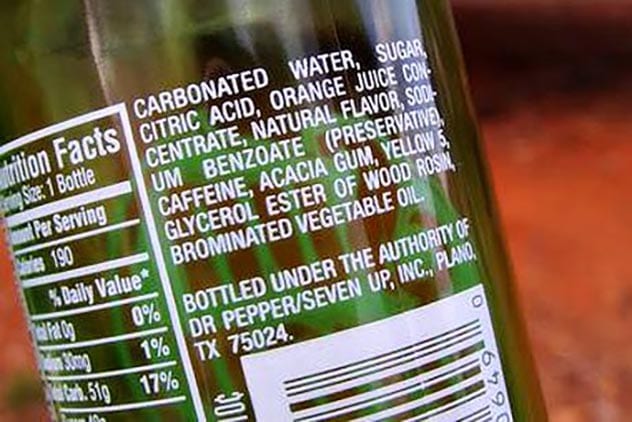
Coca-Cola is a company that makes a variety of well-loved drinks around the world. The popular brand is known for their diversity, and also for putting a chemical flame-retardant in their drinks.
According to the Food and Drug Administration, brominated vegetable oil (BVO) can be used in order to aid in flavoring fruit-flavored drinks. The amount of brominated vegetable oil had been ruled safe by the FDA, however, concern spread when it was noted that BVO is also used to decrease flammability in materials such as clothing. The oil was found in some of Coca-Cola drinks, including their popular sports drink Powerade, as well as some of their soda products.
While the FDA claimed BVO is safe to be used in drinks, research started to prove otherwise. Negative effects ranging from memory loss, increased likelihood of headaches, and loss of coordination were demonstrated when BVO was consumed too often. This was a troubling result as Powerade is geared as the rival to Gatorade for health-conscious athletes. When brought to the attention of Coca-Cola, the company agreed to no longer use BVO in their Powerade products, though it was unknown if they would do the same for their sodas. PepsiCo had previously rid themselves of using BVO in Gatorade, while reassuring consumers that the ingredients in Mountain Dew were not harmful.
BVO is banned for use in food in places such as Japan and a wide variety of European countries under the European Union.[1]
9 Tartrazine
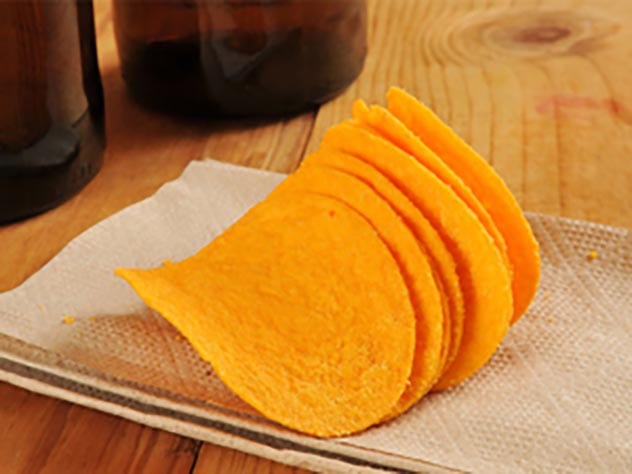
Kraft Mac and Cheese is a product that is eaten worldwide, one that may be aimed at kids but can be eaten at any age. Not only does Kraft unify those from the youngest to the oldest of ages by their love for mac and cheese, but it also does so through their ingestion of a specific chemical ingredient: yellow food dye #5.
Tartrazine, or yellow food dye #5, is a chemical product that is added in to enhance color and vibrancy; it is used mainly in food but is also approved for use on textiles. Like all things used in food, food dyes have to be approved by the FDA before being added into ingredients. However, the FDA hadn’t retested tartrazine since its approval and the negative health effects documented by the chemical gave consumers a cause for concern.
Kraft’s mac and cheese is incredibly popular in the United States, but even more so in Canada, where its eaten almost 55% more than it is in the U.S.A. However, unlike in the United Kingdom, Norway, and Austria where tartrazine has been banned in different countries due to the negative health effects on children, the United States and Canada has no restrictions on the use of yellow dye #5. Tartrazine is also found in other foods, including: cereals, candies, pie fillings, crackers, and even Doritos.
The public outcry against yellow dye #5 pushed General Mills to revamp their cereals, such as Cap‘n Crunch, to avoid using artificial dyes. Mars published a statement in 2016, claiming that they would do the same though the process could take a minimum of five years.[2]
8 Titanium Dioxide
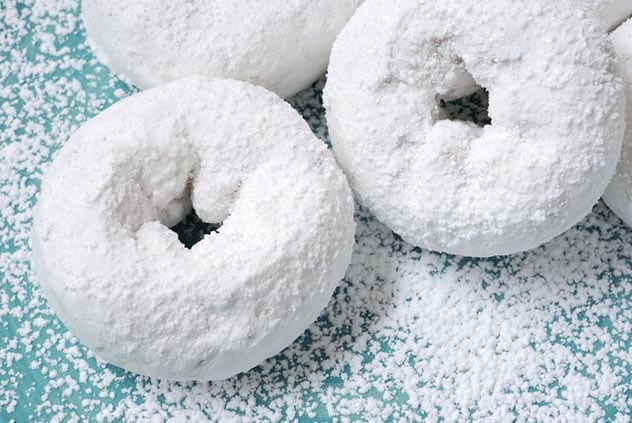
The sharp white look of food such as powdered donuts, yogurt, icing, ranch dressing, mayonnaise, and other products gives a nice, aesthetic contrast to the vibrant colors of other foods if one was looking to take a picture. What makes these foods so white? Titanium dioxide.
This chemical, which is also used most commonly in sunblock, plastics, and paint, has proven to have some negative side-effects when over-consumed. The amount allowed by the FDA is around 1 percent in food without having to report it. The concern with titanium dioxide is the nanoparticles, which if consumed too much, can cause adverse reaction such as inflammation in the digestive system, clastogenicity, and, in some cases, neurological impairment as well as the possibility of tumor development.
However, for this to occur a large amount would have to be ingested—more than just a box of powdered donuts. Still, once concerns were raised, some brands, such as Dunkin Donuts, put a halt on using titanium dioxide in their food.
The product remains approved by the FDA though it is currently being reviewed by France for a country-wide ban.[3]
7 Propylene glycol

There’s nothing quite like the sound of the sweet, carbonated pop of soda or the way a cold beer tastes on a hot day, or even the freshness of a salad dressing on your favorite salad. These things, which seem so different, have one ingredient in common: propylene glycol.
Propylene glycol is a liquid which absorbs water, making it perfect for mixing ingredients which would have a hard time mixing in with water. The use of this product can also be a lubricant, helpful in creating spices, and also is found as an ingredient in antifreeze and helps make up the artificial smoke and fog in fog machines. The FDA has labeled this food as “generally recognizable as safe” meaning that an established amount of propylene glycol can come into contact with your food or be used in food without it being harmful.
While this may be so, the ingredient—which is also used in cosmetics for absorbency reasons— is also used in Fireball, a cinnamon flavored whiskey. However, the makers of Fireball suffered a recall when a batch containing the formula allowed for the US containing propylene glycol was sent to Sweden, Norway, and Finland. In the European Union, propylene glycol has strict regulations due to the harmful side-effects high ingestions of this chemical can have. Some of the side-effects include renal dysfunction, kidney failure, metabolic abnormalities and some allergies.
While these side-effects can happen, they are rare and would require someone to intake around 100g more than the recommended amount and the only case that’s been noted dealt with a man who drank too much of, you guessed it, Fireball.[4]
6 Azodicarbonamide

Subways slogan is most commonly known as “Eat Fresh” though the freshness came into question when it was found out that azodicarbonamide was being included in their sandwiches. Azodicarbonamide is also a prominent ingredient in yoga mats and shoe soles, sparking outcry concerning the dangers of having the chemical in Subway’s food.
Other restaurants are known to use azodicarbonamide in their buns, including McDonalds, Wendy’s, Burger King, and Arby’s, and is found in Nature’s Own bread. Azodicarbonamide is deemed allowable in food by the FDA, where standards sit at around 45 per million grams in dough, a considerably small amount. However, in some cases, azodicarbonamide can cause permanent issues such as asthma, respiratory illness, and allergic and skin reactions. The Center for Science called for the FDA to consider banning it due to their concerns when azodicarbonamide is baked in bread, it can produce carcinogen urethane. This can lead to health risks in humans and poses a risk to pregnant woman.
Azodicarbonamide has been banned in places such as Europe, Singapore, and Australia. After the concerns brought to light, both Subway and Nature’s Own removed azodicarbonamide from their list of ingredients.[5]
5 Diphenylamine
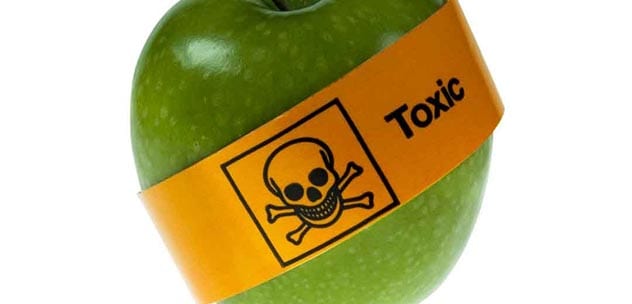
Snow White was easily drawn in by the shine of the red apple offered to her by the witch. That shine comes from a chemical known as diphenylamine and while it was the witch’s spell that put Snow White in a coma, diphenylamine when over ingested can cause its own problems.
Diphenylamine (DPA) is a colorless, odorless liquid when mixed together and is widely used to give apples that shiny, glossy look and also to keep them from bruising and stay fresh longer. DPA properties also make it useful for lubricants, propellants, and explosives. While small amounts are allowed under FDA, the European Food Safety Authority has disallowed U.S. apples with DPA. This is due to recent studies showing that a high intake of DPA can lead to cancer and called for more information, as not enough studies have been done in order to prove that there are no long-term side-effects of DPA consumption.
The current average of DPA in the US is around .42 parts per million, while the European Union allots only .10 and with 80% of US apples testing positive for DPA, the European Union won’t lift the ban until more research is conducted.[6]
4Butylated Hydroxyanisole
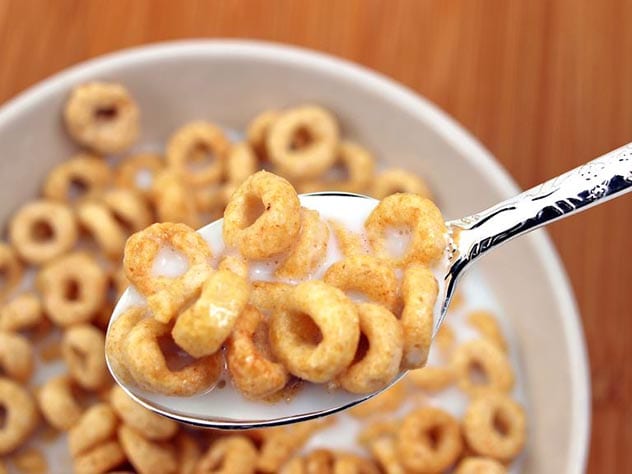
What if instead of taking the gum out of its wrapper, you chewed both the plastic wrapper and the gum together? Studies have shown that the chemical butylated hydroxyanisole can be found in both.
Butylated hydroxyanisole as well as butylated hydroxytoluene are often used as preservatives to keep food from rotting. They can also be used to preserve oils in cosmetics, make up parts of food packaging—as well as some rubber products. Most commonly found in gum, nuts, butter, some cereals and even beer, butylated hydroxyanisole comes from petroleum and form a waxy texture when mixed with fats and oils. However, though it can aid in preserving food and keeping it from smelling, butylated hydroxyanisole has been shown to lead to indigestion issues, blood clots, and interfere with hormone regulation, as well as being a human carcinogen—an ingredient most likely to cause cancer.
The FDA allows .02% per item, however the state of California regulates the use of butylated hydroxyanisole and requires that a warning label be placed on items which both butylated hydroxyanisole and butylated hydroxytoluene are included. It also sits on Minnesota’s list of Chemicals of High Concern list.
Butylated hydroxyanisole is banned in the United Kingdom and Japan, and is regulated by countries in the European Union.[7]
3 Partially hydrogenated oils
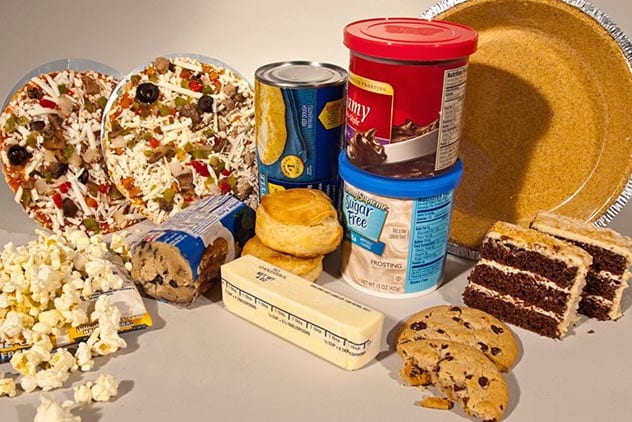
Ever wonder how candy, icing, and even frozen pizzas are able to stay preserved for so long? The answer is partially hydrogenated oils.
Partially hydrogenated oils (PHOs) oils are included in foods like icing in order to extend their shelf-life, which is good for manufacturers, but have proven to increase the amount of Trans Fat in food. For many years PHOs have been labelled as “generally recognizable as safe” according to the FDA, however, the FDA overturned this ruling and as of 2018 gave all manufactures an extended 3-year deadline to remove any partially hydrogenated oils from their ingredients. Due to this, PHOs are known to increase the likelihood of cholesterol in the blood which only leads to an increased risk of consumers developing heart disease, as well as digestive issues.
Partially hydrogenated oils have been banned in Denmark since 2004, and are also banned in Thailand as well as other countries in the European Union, and now the US.[8]
2 Potassium Bromate
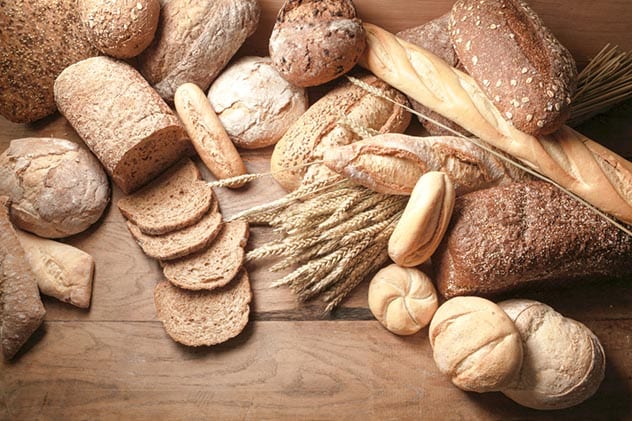
Waiting for bread to bake can be a tiring experience for someone who’s impatient, for these bakers there’s potassium bromate, an additive which speeds up the baking process while also bleaching the bread.
Brominated flour stems from the same chemicals that make up brominated vegetable oil and can be found in various bread items such as loafs, wraps, rolls, bagels, pizza crust, flatbread and even in bread crumbs. Brominated flour aids in speeding up the baking process in bread as it helps bind the gluten together and aids bleaching the bread to its crisp white color. While it seems harmless, potassium bromate has proven to have some negative side-effects when consumed in large quantities. Results have led to higher risks of cancer, as well as increased kidney and also nervous system damage.
Even though potassium bromate can be found in popular brands such as Pillsbury, it is listed on Whole Food’s list of unaccepted food ingredients and isn’t found in many major restaurant chains.
Potassium Bromate is banned by the European Union, the United Kingdom, Canada, and Brazil, and requires a warning label on items sold in California.[9]
1 Ractopamine

As of 2018, the average American eats around 220 pounds of meat a year. This meat varies from red to white, but the average meat production in 2018 will be a total of 100 billion pounds. With this amount of meat, it would only make sense to know what else is going inside of it. With recent discussions of growth hormones in milk, attention has also been drawn to what is also is being added into our meats.
Ractopamine is an additive, also known as phenethanolamine, which is fed to animals in order to ensure that they eat less while still gaining muscle rather than fat, making them leaner and more profitable. While this doesn’t seem to be an issue, ractopamine has proven to have negative side-effects and concerns have been raised due to the additive still being prominent in the meat even after processing. Around 60 to 80 percent of pigs produced with ractopamine have had more reported sick or dead pigs in comparison to other livestock without. The use of ractopamine in livestock was called into question by the EPA, who called into question the long-term effects ractopamine have on human including liver and kidney damage as well as thyroid issues.
Ractopamine has been banned for use on livestock countries such as Russia and China, as well as twenty-six other countries. Restaurants such as Chipotle and grocery stores including Whole Foods have banned meats with ractopamine.[10]
For more lists like this, check out 10 Bizarre Origin Stories About Your Favorite Foods, and 10 Deadly Household Foods That Can Actually Kill You.







